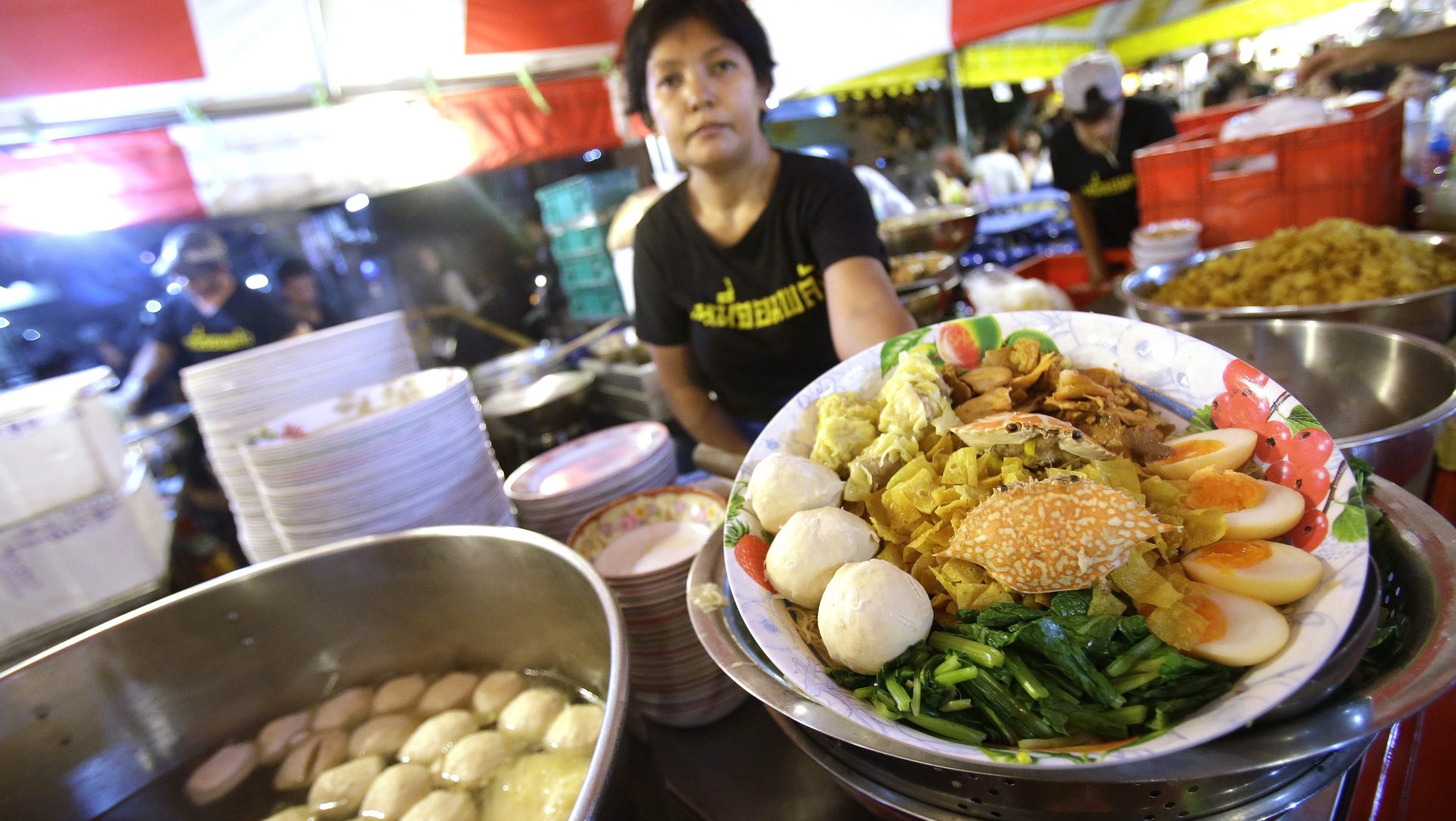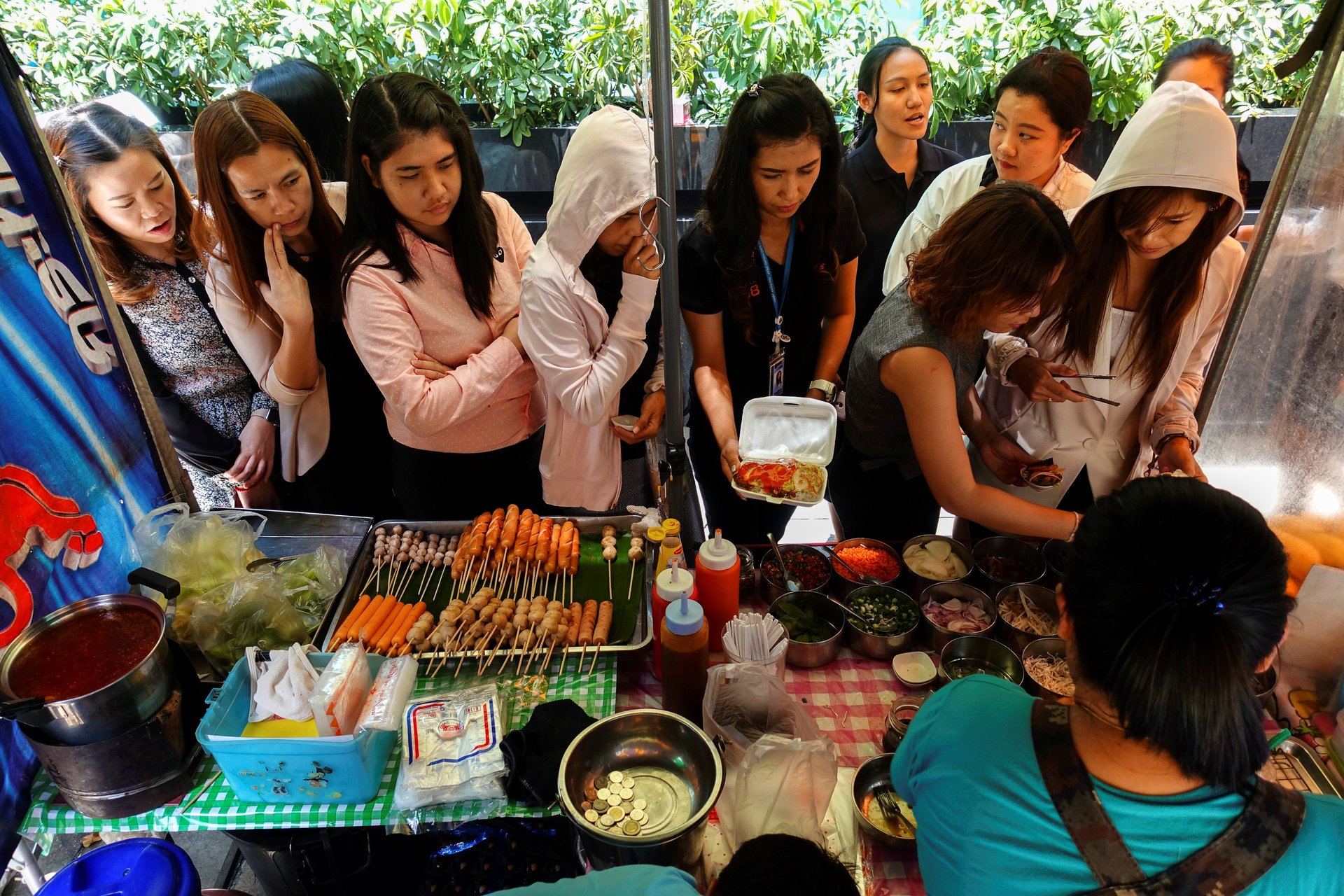Temper your outrage—Bangkok is not banning street food
Take it easy foodies—last week’s alarming news that Thailand’s capital is banning its hallowed street food stalls appears to be a bit of an overstatement, though the ultimate effects of a government crackdown have yet to be determined.


Take it easy foodies—last week’s alarming news that Thailand’s capital is banning its hallowed street food stalls appears to be a bit of an overstatement, though the ultimate effects of a government crackdown have yet to be determined.
Whether it was an innocent misunderstanding or the government softened its position after receiving a thunderous backlash, there is no outright ban on street food in Bangkok.
“The Bangkok Metropolitan Administration is not banning street food in Khao San and Yaowarat roads—it’s the opposite,” BMA advisor Wanlop Suwandee told CNN. “It is supporting street food by implementing hygienic measures and organizing traffic around the areas.” Khao San is one of Bangkok’s biggest tourist districts and Yaowarat is the center of the city’s Chinatown; together they are home to some of the city’s best street food stalls.
Wanlop says he was misquoted by the English-language newspaper The Nation, in an article that triggered an outpouring of international outrage. (The quote in question: “The BMA is now working to get rid of the street vendors from all 50 districts of Bangkok and return the pavements to the pedestrians.”)
The Tourism Authority of Thailand (TAT) assured foreign visitors that food stalls will remain in the streets of Bangkok: “[The plan] is not to totally take away street food from Bangkok streets, but there are some reasons and some places that will be reorganized,” TAT governor Uthasak Supasorn said in a statement
Even before the confusing back-and-forth, the city has methodically evicted about 15,000 food vendors. But the prospect of a blanket ban is receding.
“It was like a UNESCO monument was under threat,” said Gisèle Yasmeen, a senior fellow with the University of British Columbia’s Institute of Asian Research who published a study on Bangkok’s informal food sector.
Yasmeen said that Bangkok’s estimated 380,000 street vendors are a defining element of Thailand’s capital. Not only do they provide affordable food to office workers and tourists, but they are also a key source of income for migrants, women, and laid-off professionals.
Many office workers took to vending after the 1997 financial crash, like former stock broker Sirivat Voravetvuthiku, who now has a chain of coffee and sandwich shops in Bangkok.

The government’s confusing stance on street vendors doesn’t surprise travel writer Gary Leff.
“Nothing is ever quite what it seems in Thai politics,” said Leff. “There wasn’t ever a clear shared understanding of what the ban would mean, and it wouldn’t have meant an end to all street food. Some vendors do rent land for a pittance in front of retail shops, for instance.”
Leff cautions against putting too much weight on governments statements. “We’ll have to watch what actually happens, not statements about what will happen, to understand conditions on the ground,” he said.
Regulating the growth of hawker street vendors has been a decades-long struggle for Thailand and many other developing countries with vibrant street food cultures, including India and the Philippines.
On one hand, the government needs to provide clear sidewalks for pedestrians and heed local anti-street hawker citizen groups like SayNoStall. On the other hand, it’s also in Bangkok’s interest to support the informal businesses that are part of the cultural identity of Bangkok.
The government has periodically tried to shift that balance. Starting in 1973, the BMA has tried several schemes including coaxing vendors into designated selling zones like street hawker centers in Singapore.
But simply copying Singapore’s strictly regulated street vendor solution won’t work in Bangkok, explains Yasmeen. The culture, the migrant population, and the level of enforcement are vastly different. “What’s needed is an ongoing dialogue with the government, people’s interest groups and the many vendor associations,” she said.
Leff added: “As a tourist if I want neat and tidy, I’ll go to Singapore.”